Colombia’s creative ecosystems Q1•2024
Africa’s techdriven creative renaissance
From conflict to creativity: spotlight on South Sudan
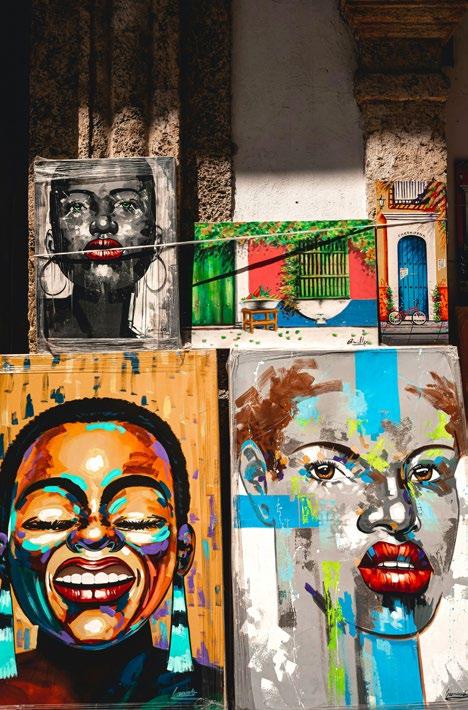
Creative Economies

Join our mission
At the core of CrossBoundary is our purpose:
We unlock capital for sustainable growth and strong returns in underserved markets.
The CrossBoundary team is a unique group of people who are genuinely excited by the opportunity to make a difference in some of the most challenging yet exciting markets in the world.
We have 180+ experienced investment and advisory professionals across 23 offices globally.
Team members come from diverse backgrounds but share several qualities: curiosity, humility, integrity, a drive for excellence, and a bias for action.
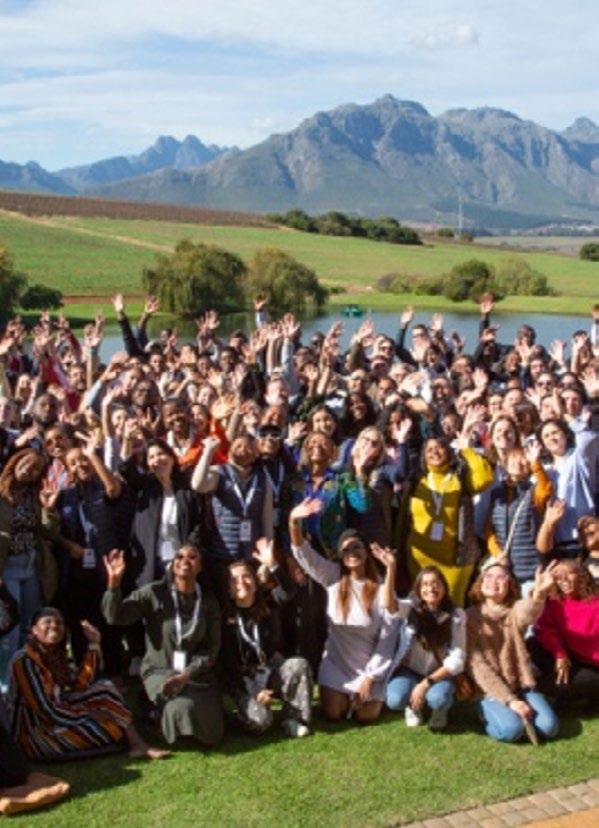
Learn more about working with us:
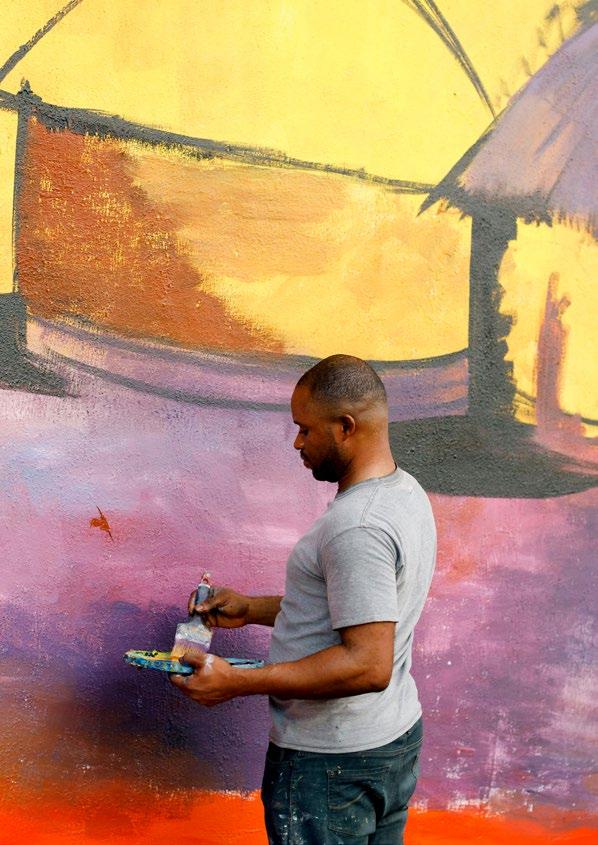
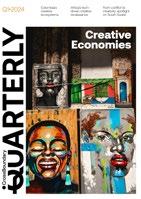
CROSSBOUNDARY QUARTERLY Q1 2024
EDITORS
MIKE CASEY KYMBERLY BAYS
DESIGNER
DAVE LLOYD
The views and opinions expressed in this magazine are those of the authors and do not necessarily reflect the official policy or position of CrossBoundary Group or any of its affiliates. The magazine is intended for general information purposes only and does not constitute investment, legal, tax, or other professional advice. Readers should consult their own advisers before making any decisions based on the content of this magazine. CrossBoundary Group does not assume any liability for any errors or omissions in the content of this magazine. CROSSBOUNDARY QUARTERLY Q1 2024
DISCLAIMER
About the CrossBoundary Group
CrossBoundary Group is a mission driven investment and advisory firm that unlocks the power of capital for sustainable growth and strong returns in underserved markets. CrossBoundary Group has advised on over US$11 billion of closed transactions in impactful sectors, such as agriculture, health, education, manufacturing, ICT, infrastructure, and clean power. CrossBoundary Group also directly deploys capital through its investment platforms, such as CrossBoundary Energy, CrossBoundary Energy Access, CrossBoundary Real Estate, and The Fund for Nature. CrossBoundary Group has a global presence with 23 offices and over 180 professional staff. For additional information, visit www.crossboundary.com.




This interactive document has been optimized for use on screens in portrait orientation.
Bold blue words will link you to the reference associated with the text.


Economies Africa’s tech-driven creative 19renaissance Conflict to creativity: spotlight on South Sudan 30 06 Colombia’s creative industry ecosystems 03 Letter from the editor
42 links and credits
01 CROSSBOUNDARY QUARTERLY Q1 2024


Letter from the Editor

CrossBoundary’s work places us at the center of some of the world’s most vibrant and culturally rich locations on the planet. We are privileged to see firsthand not only how creatives shape the societies in which we work and live, but also how individuals and businesses are leveraging new tools and technologies to identify new customers, scale their distribution, and access global markets. Oftentimes we help them do so.
While many readers will be familiar with the engrossing paintings of Fernando Botero, the energetic rhythms of Afrobeats, the intricate mosaics of the Middle East, and the alluring musicals in a Bollywood film, it may come as a surprise that the rise of the “creative economy” is a key focus for economic development.
In fact, the creative economy—also known as the “orange” economy—is vital in helping countries to diversify the composition of their output while enabling new sources of growth.
Broadly speaking, the creative economy is comprised of two categories of activity: culture and knowledge. To be fair, these are extremely broad categories, encompassing artists and advertisers, designers and software developers, fashion and film, and much else besides. However, each of these industries focuses on the generation of intellectual property (IP).
03 CROSSBOUNDARY QUARTERLY Q1 2024
Over the last two decades, there has been secular growth in the “intangible economy,” with economic returns increasingly being tied to IP rather than tangible assets. Traditionally, gatekeepers have controlled the generation and flow of IP, determining which types of content had value to whom, and how much the creators should receive in compensation.
The internet disrupted this, enabling the global distribution and recombination of ideas at virtually zero marginal costs. Moreover, the greater availability of data is facilitating the ability of small business to engage in international trade (a capability our Data Analytics team has been actively building). As Michael Mauboussin highlights in a recent research piece, these characteristics are forms of increasing returns to scale.
We believe investors should be paying closer attention to this trend. That is why our inaugural edition of the CrossBoundary Quarterly explores the theme of “Creative Economies.”
In this issue, Olowo Aminu and Chika Obodo from our Nigeria office explore how technology is driving a renaissance for creators across Africa. Kymberly Bays, our Global Head of Communications, provides a deep dive on the global relevance of South Sudanese creatives and athletes. And, Laura García-Aguirre and Gabriela Bojanini from our Bogota office collaborate with Pedro Alejandro Cárdenas (creative director of Pigmento Crew) on the role that creative industry ecosystems are playing in revitalizing Colombia’s municipalities.
We hope you enjoy this issue, and please let us know what you think!
Mike C.

MC 04



05 CROSSBOUNDARY QUARTERLY Q1 2024
Creative industry ecosystems in Colombia: how collaborative efforts foster economic and social prosperity









 aura García Aguirre and Gabriela Bojanini, in collaboration with Pedro Alejandro Cárdenas, creative director of Pigmento Crew
LG
GB
PAC
aura García Aguirre and Gabriela Bojanini, in collaboration with Pedro Alejandro Cárdenas, creative director of Pigmento Crew
LG
GB
PAC





07 CROSSBOUNDARY QUARTERLY Q1 2024
economicsocial prosperity

Human creative expressions have always been a thermometer, a testimony, an indicator of society’s evolution. From cave paintings in prehistoric times to today’s street and digital art, humans have always found a way to expand the ways we communicate, embracing new tools to express ourselves and interact with our environment.
These behaviors may only seem important to us as individuals: each one of us has our own creative likes and dislikes, our own traditions, and our own artistic preferences and talents. However, market interactions are inextricably embedded in humanity’s need to express and create, giving rise to entire industries (e.g., music and film) that form a strong economic sector.
In fact, the arts sector currently employs more than 30M people globally and is valued at more than US$4.3T annually, which adds up to a 6.1% share of the global GDP.➊ This is twice the size of the Canadian economy (US$2.2T) and is comparable to the entire German (US$4.1T) or Japanese (US$4.3T) economies.➋ In other words, our artistic expressions, however fluid they may seem, have become indispensable to generating social development and economic growth.

➊ Promoting the Diversity of Cultural Expressions and Creative Economy. UNESCO (2023)
➋ World Bank national accounts data in current US dollars. (2022)

But, what makes up the creative economy?
Trying to define this sector can lead us to the eternal dilemma of defining what is art and what is not. Many have tried to address this great philosophical, theoretical, and artistic question, only to leave us with a range of perspectives (all of which are valid). However, for the past few decades, the creative sector has been conventionally defined as the set of creative, cultural, and innovative activities that are able to generate direct or indirect economic value. The task of deciding what falls into each of these three categories and what does not, is left to each of us and to each society.
Even so, in recent decades, “creative industry ecosystems” have emerged worldwide and have demonstrated a significant capacity to transform spaces in cities and territories—even in the most challenging and vulnerable locations. These ecosystems are a model for multistakeholder collaboration where creative expressions are at the center. Civil society, public institutions, and private players intertwine to foster one or more creative economies with the ultimate objective of renovating and bringing a new social narrative to certain geographic spaces.
Creative industry ecosystems in Colombia Creative industry ecosystems in Colombia 08
Clear intention to innovate and/or change the way in which the local players interact with their environment through creative expression
Positive reception from a larger community and involvement of additional players
Broad public and private sector interest
Consolidation of communal/ social narrative(s)
Successful environment transformation
Renovated physical spaces
New supply and demand for creative products and services
Infrastructure and technology investments
● Investors find a flourishing market and infrastructure to invest in
● Public institutions are interested in promoting and protecting environments that positively impact the public wellbeing, especially the ones with a proven concept and track record
At CrossBoundary we know how powerful this type of collaboration can be when generating lasting change, particularly in underserved markets. We specialize in developing innovative mechanisms to foster collaboration and uncover the deep potential of investment opportunities that would otherwise be overlooked, and the creative economy is a ripe market for this. This is why the results of creative economy ecosystems that have flourished worldwide are incredible success stories to us: districts such as Wynwood in Miami, Matadero in Madrid, Peckham Levels in London, LX Factory in Lisbon, and Comuna 13 in Medellín are some wellknown examples of these ecosystems, some of which we have studied deeply.
However, in this article, we would like to showcase two lesser-known but powerful examples from Colombia that demonstrate tight multi-stakeholder collaboration and achieve strong social and economic results through authentic creative expressions.
Economic sustainability
Civil society Private players Time
the
Individual or collective initiatives derived from
local community
09 CROSSBOUNDARY QUARTERLY Q1 2024
Usiacurí
The first of these ecosystems is Usiacurí, a small municipality located less than an hour from the Caribbean Sea and historically known for its architecture, artisanal craftsmanship, and cultural tradition spanning over 170 years. Driven by a narrative around color, the community of Usiacurí, in collaboration with government agencies and with the sponsorship of private actors—which included the mobilization of US$500K—created the largest mural in Colombia.
This endeavor helped position a small artisanal town as a center for tourism and international production.➌ The successful collaboration has transformed a town that received 400 visitors per month into a tourist destination receiving 24,000 monthly visitors in just 3 years.➍ The economic development that has been triggered after these creative interventions has been material for the local population.
Usiacurí: Social and economic development through color
Location: Atlántico, Colombia
Political status: municipality
Population: 11,789 inhabitants
Main economic activities: tourism, arts, and crafts

Usiacurí’s cultural and economic transformation was completed using color as a tool for change - Today, the town holds the largest mural in Colombia depicting an open catalog of the region’s dry tropical forest bird species on top of households’ roofs
2021
● Start of communal, public, and private actors’ conversations and round tables
● Public and private actors jointly commit US$500K+1
● Project launches its first street mural in August 2021
2022
● By October 2022, the municipality grew from 400 monthly visitors to 12K visitors2
2023
● Today, more than 24K people per month visit Usiacurí3
● Spillovers on commerce, transport, hotel & restaurants, and other services
2024
➌ Usiacurí se embellecerá para atraer a los turistas. El Heraldo. (2021)
➍ Así logró Usiacurí pasar de 400 a 24.000 turistas al mes. El Tiempo (2022)
➎ Distritos Creativos. Bogotá’s Culture, Recreation and Sports Secretariat. (2024)
Creative industry ecosystems in Colombia Creative industry ecosystems in Colombia
ACTORS
RESOURCES


Local community
Usiacurí’s local inhabitants
1K houses painted4
● 15K m2 of roofs
● 57K m2 of murals/walls
Public player
Governor’s & Mayor’s office
Private player Fundación Pintuco
+US$500K
70% of capital commitment1
Pre-intervention
● 400 monthly visitors
● ~US$100 in total crafts’ sales weekly
● 2 restaurants
Post-intervention4
● 24 thousand monthly visitors
● ~700 USD per week in crafts’ sales
● +20 restaurants

The Brazilian holding of Pintuco was inspired by the project and is now seeking to replicate the project in Brazil
30% of capital commitment1
Non-profit organization of a leading Colombian paint supplier
Usiacurí community wanted to leverage Colombia’s ambitious tourism policy and increase the flow of visitors – Government officials in alliance with Fundación Pintuco provided discussion spaces, direction, and materials to execute the vision


Usiacurí’s crafts have appeared on Dior Maison’s photoshoots5
Sources: 1 El Heraldo; 2 Semana; 3 El Tiempo; 4 Governor’s Office; 5 livingetc.com, Dior Maison SS20 Collection
Creative industry ecosystems in Colombia
11 CROSSBOUNDARY QUARTERLY Q1 2024




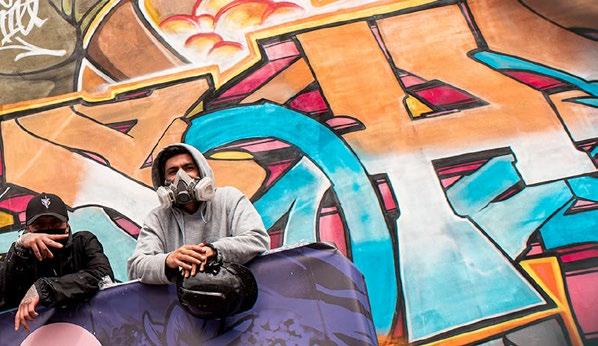



CROSSBOUNDARY QUARTERLY Q1 2024
Bogotá
The second case is the large-scale creative ecosystem that has been consolidated in Bogotá, the capital of Colombia. With a population of 11,508,000 inhabitants and located in the Andes Mountain range, this city boasts remarkable multicultural richness.
Taking advantage of its diverse population and culture, it has effectively developed 15 urban districts where creativity is nurtured and safeguarded.➎ Nine of these districts are called “spontaneous” because they have been community-generated attempts to revitalize their neighborhoods through creative interventions such as muralism, graffiti, music, and gastronomy. The strong social narrative behind these transformations ends up developing cultural platforms with a high diversity of creative products and services. Districts such as San Felipe and Chapinero are a perfect example of this, as they are districts where a recovery of urban spaces and a proliferation of artistic, gastronomic, and cultural expressions have taken place. These two districts alone, are home to more than 30 independent galleries, over 20 restaurants, and a number of large-scale street art interventions. This in turn has attracted new local and international audiences to a renewed space within the city. Given the success of the spontaneous creative districts and the thriving of different markets throughout the city, the local government opted to institutionalize this dynamic of renovation and promotion. Since 2015, over US$30M of public resources have been continuously committed to inducing these environments where creativity is gestated based on a social identity.
The best example of this is the restoration of the Bronx as a new Creative District. The Bronx was a territory in the center of the city where three criminal gangs involved in drug trafficking, extortion, torture, and abuse used to operate. This urban area was then transformed into one of the most important cultural environments in the city: today, the Bronx Creative District holds numerous music festivals, artistic gatherings, and is still investing to become the arts powerhouse of the city.
Bogotá: An economy of a scaled creative industry ecosystem
Location: Bogotá, DC, Colombia
Political status: capital city
Population: 11M+ inhabitants
Main economic activities: Public admin. & services, infrastructure, financial activities, ICT, and others

Bogotá is the biggest city in Colombia.
As the powerhouse of cultural and economic development, the city has deployed sizable investments (both monetary and institutional) to promote artistic, cultural, and creative sectors. Today, Bogotá is a reference location for cultural diversity and creative expression
14
Over 30% of Bogotá’s population is not originally from the city – high cultural diversity and a collage of backgrounds have been a fuel for creative collective movements

Bogota’s Open Museum (MAB)1
• US$6.5M+
• 1K+ individual or collective artists
• 14+ underbridge zones turned into street art displays
Community
Public players
Bogotá’s public institutions recognize and boost individual and collective creative initiatives through a range of transformation projects that enhance commercial opportunities and increase the population’s quality of life




Es Cultura Local2
• US$11M+
• 2.2K+ creative proposals
• 121K+ direct and indirect beneficiaries
• 16+ districts intervened

10+ public entities
Distrito Creativo del Bronx3
• 3 vulnerable neighbourhood communities
• 200K+ citizens
• Public bidding for US$70M+
• 3.9 hectares intervened
Bogotá’s reative industry ecosystems social and economic results
public and private players
Private players
Private investors and players are able to leverage existing markets to deploy capital and strengthen economic sustainability
San Felipe Art District4
• Open San Felipe event: hosts 70+ creative initiatives every two months
• 28 galleries in a single neighbourhood
Chapinero5
• Host of Bogotá Graffiti tours
• Ongoing US$500K+ investment in cultural and entrepreneurial center (Mur_mura)
Selected 5 out of 15 creative districts
3 organized crime trafficking) hubs were shut down in

Sources: 1 Ifobae; 2 “Es Cultura Local” is a public and local artists-led initiative that seeks to boost creative economies throughout every district in the city; 3 use.metropolis.org; 4 Open San Felipe website; 5 kienyke.com; 6 Own calculations (DANE, GEIH); 7 Concejo de Bogotá.
CROSSBOUNDARY QUARTERLY Q1 2024 15

In short, these are spaces where Bogotá’s civil society, public, and private actors have come together to create, explore, and live within the creative economy, generating new consumption dynamics and a constant flow of visitors. These creative economy ecosystems have mobilized more than US$50M (from public and private sources) in the last 10 years, leading the creative economy as a whole to contribute approximately 6% of Bogotá’s GDP in 2023.➏
Moreover, creative interventions have benefitted the city beyond economics, improving the safety and quality of life for all citizens. To illustrate, the Security Secretariat of Bogotá has reported safety improvements in 11 under-bridge zones where the “Museo Abierto de Bogotá” district has intervened, achieving a 41% reduction in reported robberies, homicides, and sex crimes.➐
Creative industry ecosystems showcase the transformative power of collaborative efforts in fostering economic and social prosperity. From Usiacurí’s colorful project to Bogotá’s restoration of degraded urban areas, these initiatives have not only embellished cities’ landscapes but have also driven economic growth. As we witness the impacts of artistic ventures, it becomes clear that supporting creative economies is not merely a cultural pursuit but a valuable strategy for driving sustainable development. Through continued support and investment, these ecosystems serve as beacons of hope, demonstrating the possibilities that arise when communities, policymakers, and enterprises unite to unleash creative potential.

CrossBoundary Advisory is committed to unlocking the untapped potential of Latin America and the Caribbean through our expertise and strategic partnerships. Since 2015, we have been working on innovative collaborations between capital seekers, capital providers, and the donor community to drive economic growth while having a positive and sustainable impact on the environment. With our extensive market knowledge and robust local network, we have developed unparalleled access to high-impact and high-return opportunities that are often overlooked. If you are interested in learning more, please feel free to reach out to Laura Garcia or Gabriela Bojanini

Pigmento Crew is a non-profit organization from Bogotá, working to facilitate creative economy ecosystems in the most vulnerable territories in the country. Pigmento has collaborated with more than 5 local communities and has been a grant awardee of a number of public institutions to develop creative projects across Colombia. Reach out to Pedro Alejandro Cárdenas to know more about the work they are doing in Colombia and how they plan to expand it to Los Angeles, California.
➏ Own calculations. Data from DANE, Bogotá’s GDP (supply side) accounts. ➐ Ideartes. (2023)
Creative industry ecosystems in Colombia Creative industry ecosystems in Colombia
16


Creative industry ecosystems in Colombia Creative industry ecosystems in Colombia CROSSBOUNDARY QUARTERLY Q1 2024 17
Time is running out to achieve universal energy access in Africa
Mini-grids are the least-cost method to bring electricity to over 260 million people in Africa. The mini-grid sector is ready to scale and meet that challenge. But it needs a new model of financing that allows infrastructure capital to flow into the underlying assets.
CrossBoundary Access is open-sourcing its project finance approach used to finance over US$80 million of mini-grids in Africa.
Open sourcing will help accelerate universal access to electricity in Africa. We believe we can converge on financing solutions to achieve SDG7, if we act swiftly, and if we act together.

Download more information: Financial Model Term Sheets Open source toolkit

CROSSBOUNDARY QUARTERLY Q1 2024 19
Economy Creative Economy




demand for Africancreativeproducts Localandinternational Creative Economy OA CO
by: Olowo
and Chika
➍ ➌ ➋ ➊ 20
Increased
•Written
Aminu
Obodo

➊

New monetization models and financial inclusion: Individual Content Creators
Traditionally, content creators and artists in Africa derived income from brand sponsorships and live performances. However, the landscape is evolving with the emergence of tech platforms, providing novel avenues for African content creators to generate and receive income. Platforms such as YouTube have permitted creators to monetize their content since as early as 2010. In recent times, there has been an increase in platforms introducing monetization options.
For example, Facebook’s content monetization launched in 2022 in 20 subSaharan African countries, and X (formerly known as “Twitter”) launched its ad revenue sharing program in 2023. Audio streaming services like Spotify and online marketplaces for digital content like Selar have also become increasingly popular, offering digital content creators opportunities to monetize their content. Selar, an all-in-one e-commerce store builder, also revealed that creator collective earnings on the platform doubled in 2023.
The evolving landscape has led to considerable financial empowerment for content creators across the continent. Creators like Mark Angel, a popular Nigeiran comedian on YouTube, is now generating millions in annual income, with the average annual revenue potential of a full-time content creator estimated at ~US$100,000. Beyond the financial gains, the democratized access to these platforms and technologies is breaking down barriers, enhancing financial inclusion and empowering individual creators. This shift is not just about new revenue streams; it is fostering a more inclusive and diverse creative landscape.
CROSSBOUNDARY QUARTERLY Q1 2024 21
➋➋ ➌
Access to new markets and audiences: African Music
African creatives are harnessing the power of streaming services, social media, and online marketplaces to reach audiences beyond traditional geographic boundaries. A clear example is “The Black Book”, a Nollywood movie that secured the 3rd top spot globally on Netflix shortly after its debut, accumulating views within 48 hours
Two songs out of Africa—“Water “Calm Down” by Rema and Selena Gomez—also charted in the top 10 of the Billboard Hot 100 in 2023. “Water” won the inaugural award for Best African Music Performance at the 2024 GRAMMYs. And “Calm Down” achieved a significant milestone as the first and only song from Africa to surpass 1 billion streams on Spotify. Renowned artists like Libianca and Black Sheriff have also achieved global acclaim with the release of international hits. This democratization of the creative landscape not only amplifies diverse voices and narratives but also acts as a catalyst for cultural influence across different geographies.


22


CROSSBOUNDARY QUARTERLY Q1 2024 23
➍ Creative Economy


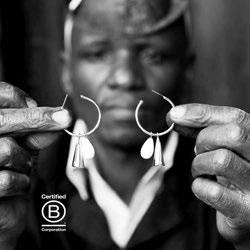

accessing job opportunities that did not traditionally exist.
Given the youth unemployment rate of ~30% and a rapidly growing youth population on the continent, these new platforms are poised to play a pivotal role in expanding and diversifying job prospects within the African creative economy, contributing to the overall economic growth of the continent.
24
Creative Economy

Attracting local and international investments: Universal Music Group and Mavin Records
The integration of technology within the African creative economy is increasingly attracting significant investments from both local and international stakeholders. As technology platforms continue to reshape the landscape, investors are recognizing the potential within the continent’s creative industries and are eager to support startups and enterprises leveraging these platforms to address unique challenges and access untapped opportunities. In a recent development, Universal Music Group, a global music industry giant, acquired a majority stake in Mavin Records, a Nigerian-based record label. Although the specific terms of the deal remain undisclosed pending regulatory approval, earlier reports from October 2023 suggested that Mavin was being valued at over US$125 million, as indicated by Shot Tower Capital. This strategic acquisition comes after Mavin’s successful year, marked by outstanding streaming and digital song sales performances from label artists like Rema and Ayra Starr.
Amplifying Successes with Disruptive Technologies
While Africa’s creative economy continues to show signs of steady growth, the successes over the last few years still fall short of the continent’s true potential. Valued at US$58.4 billion, Africa’s creative economy is only 2.9% of an industry exceeding US$2 trillion. This underscores the substantial opportunities for growth. The United Nations Conference on Trade and Development (UNCTAD) suggests that harnessing technological advances associated with the Fourth Industrial Revolution can propel the sector’s growth
Globally, creative industries demonstrate faster adoption of new technologies compared to traditional sectors like manufacturing, and a similar trend is evident in Africa. The youthfulness of the demographic within the sector is a pivotal factor, as cultural and creative industries heavily employ young people who are more inclined to experiment with and embrace new technologies. Additionally, the technologies applied within the creative sector are generally accessible with low entry barriers. Furthermore, at the core of the creative industry lies an intrinsic drive for innovation, with creativity and innovation closely intertwined.
➎ CROSSBOUNDARY QUARTERLY Q1 2024 25
Numerous disruptive technologies—including generative AI, virtual and augmented reality, and blockchain—are already making waves on the continent, organizations are leveraging inventive approaches to challenge incumbents and create new markets.

Ain Nigeria, allowing customers to create AIgenerated cards through a dedicated platform.
Generative AI is playing a pivotal role in boosting productivity for both individuals and enterprises within Africa’s creative economy. Individual artists can automate elements of their workflow, enabling them to concentrate more on the creative aspects of their work. Meanwhile, enterprises can streamline value chains and production processes, efficiently deploying scarce resources where they are needed most. This integration of generative AI marks a transformative shift, offering new dimensions of efficiency and creativity in the African creative space.


26
BAugmented and Virtual Reality
Augmented and Virtual Reality (AR/VR) hold the potential to revolutionize storytelling and reshape the way content is encountered across the African continent. In a region where diverse cultures and rich histories converge, AR/VR emerge as powerful tools to enhance storytelling, providing audiences with a unique and engaging way to interact with narratives while unlocking new avenues for content monetization.
Blockchain


Today, Art Tech District , an urban arts and technology museum in Nigeria, enables visitors to delve into some of the country’s most significant historical events through Virtual Reality. Startups like VerveAR and MediAR are empowering creators on the continent with tools to transform physical products such as art and fashion items into AR content. This allows global audiences to experience products in more immersive and interactive ways, opening up innovative possibilities for creators to showcase their work on a broader scale.

CBlockchain’s decentralized nature has the potential to transform how artists and creators manage their work, from music, art, literature, and more. Blockchain’s transparency and security offer a crucial solution for intellectual property protection, safeguarding creative assets and preventing unauthorized use or piracy, ensuring fair compensation for artists.
Nigerian blockchain startup
Trendx has collaborated with The Nollywood Factory, a filmmaking company in Africa to tokenize the intellectual property rights of an upcoming movie project using blockchain technology. By digitally representing real-life assets, this innovative application of tokenization showcases the potential for blockchain to revolutionize intellectual property management within the African film industry.
CROSSBOUNDARY QUARTERLY Q1 2024 27



28
CrossBoundary is honored to be included in the ImpactAssets 50 2024 list
The ImpactAssets 50™️ (IA 50) 2024 is a free publicly available, searchable database of impact investment fund managers globally. The IA 50, now in its 13th year, is designed to offer a simple way to identify experienced and emerging impact investment firms and explore the landscape of potential investment opportunities across diverse impact areas, maturity levels and geographies. This year’s list is composed of 155 impact fund managers selected from an unprecedented 343 applications, a submission volume that is 15% higher than last year. This growth signals increased interest in the IA 50, alongside expansion and maturation of the impact investing industry at large. The increasing traction also points to a broader shift that embraces impact investing’s critical role in shaping a sustainable future.
“Year after year, the IA 50 stands as an essential guide for everyone in the financial ecosystem — from individual investors to global corporations — enabling them to discover and engage at the forefront of impact investing. The database encapsulates the pulse of the industry, providing a snapshot of the firms poised to make a significant difference through their investments,” said Malaika Maphalala, CPWA®, IA 50 Review Committee Member, and Wealth Advisor and Trust Steward, Natural Investments PBLLC.

CROSSBOUNDARY QUARTERLY Q1 2024
CONFLICT TO CREATIVITY
South Sudan defying expectations and showcasing talents
Africa’s creatives— their sound, art, and aesthetics
Africa’s creatives—their sound, art, and aesthetics—are inescapable globally, dominated by the creative output of Nigeria, South Africa, and Kenya. Beyond the “Big 3” successes, growth markets like Ghana, Senegal, Rwanda, Tanzania, and Uganda are all pursuing strategies to cultivate creative works for export.
But a more surprising market is poised to capture attention in 2024: South Sudan.
Despite its hard-won independence and emergence as the world’s newest country in 2011, not much is celebrated globally for South Sudan. Instead, a familiar story is told. Outbreaks of civil conflict in 2013 and 2016 undermined post-independence development plans and created humanitarian challenges. Moreover, persistent political and economic instability, poor infrastructure, and inflation have only worsened since the COVID-19 pandemic.
Yet it would be a mistake to overlook the country in the conversation on Africa’s emerging creative economies. South Sudan is gifted with the youngest population in the world (more than 70% of its people are less than 30 years old)➊. Its nascent creative sector showcases the convergence of digitally enabled content creation, entertainment, and sports. South Sudan is emblematic of how creativity is deeply embedded across the continent.
 Written by: Kymberly Bays, with inputs from Yine Yenki and Deng Kon YY
Written by: Kymberly Bays, with inputs from Yine Yenki and Deng Kon YY


SUDAN
SUDAN
SOUTH SUDAN SOUTH SUDAN SOUTH SUDANSOUTH
SOUTH
SOUTH SUDAN
DK
30
KB



CROSSBOUNDARY QUARTERLY Q1 2024 31
The rise of Africa’s creative economies – what we already know
Africa’s creative industries are witnessing remarkable growth. According to law firm Adams & Adams, the creative sector in Africa generates around US$4.2 billion annually➋, with a growth rate outpacing other sectors on the continent.
Sub-Saharan Africa became the fastest-growing region for recorded music revenues in 2022, according to the IFPI Global Music Report 2023➌. South African singer Tyla won the inaugural award for Best African Music Performance at the 2024 GRAMMYs. In February 2024, it was announced that Universal Music Group (UMG)➍, one of the world’s biggest music corporations, acquired the majority stake in a leading Nigerian record label, Mavin Global (Rema, Arya Starr, Ladipoe).
Spurred by Nigeria’s Nollywood, the film industry has become the second largest in the world in terms of output. According to PricewaterhouseCoopers, in 2021, the film industry contributed 2.3% and about 239 billion naira (or US$660 million) to Nigeria’s GDP.
Three hundred million Africans are active on social media.
“I’ve always said that content is the new crude oil. Similar to the oil industry’s success, the creative industry requires a lot of refineries to produce the finest oil product. The same refining is highly needed for our creative industry now,” D’Banj, a prominent Nigerian musician, told CNN last year➎ during the Africa Walk event in Lagos.
active on social media active on social media active on social media active on social media active on social media active on social media active on social media active on social media active on social media active on social media active on social media active on social media

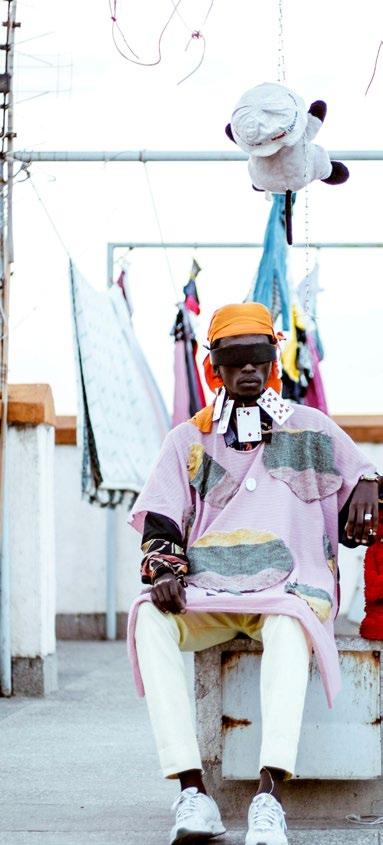
32
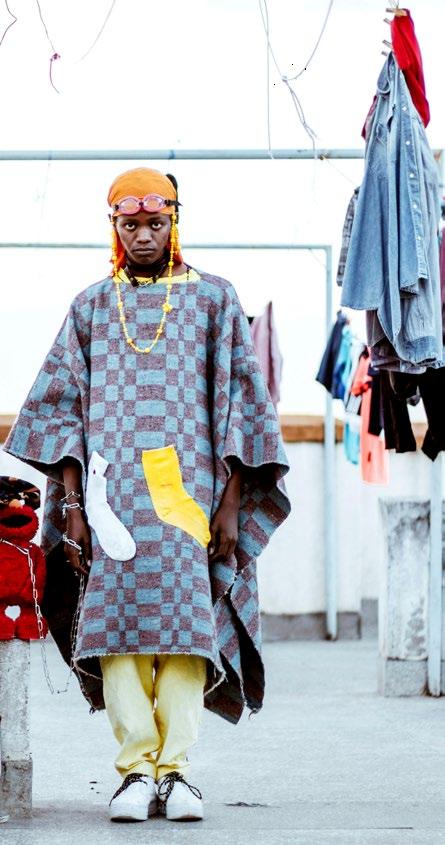

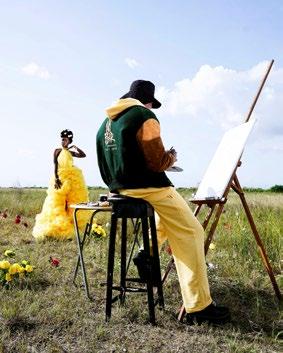

CROSSBOUNDARY QUARTERLY Q1 2024 33
Change your mind about South Sudan
Barriers to the creative sector’s growth within South Sudan are pronounced but not due to a lack of creative energy. This is reflected in the success of South Sudanese at home and in the diaspora, with many climbing to the pinnacle of their creative fields.
South Sudanese models have long dominated fashion runways and magazine covers. 11 of the current Top 50 Models on model.com➏ are of South Sudanese origin (Nyagua Ruea, Mary Ukech, Aweng Chuol, Awar Odhiang, Adit Priscilla, Abény Nhial, Ajok Daing, Akon Changkou, Alaato Jazyper, Amar Akway, and Aweng Chuol), appearing on advertising campaigns for the most prominent fashion houses and brands on the planet.
Like Manute Bol before them, many male and female basketball players have ascended to the NCAA➐, WNBA➑, NBA➒, Australian, and European leagues. American author John Grisham fictionalized a version of this story in his New York Times Bestselling novel, Sooley 10 .
South Sudanese music artists often sing in Juba Arabic and English, providing crossover potential into Arabic-speaking markets if MENA market audiences crave the Afrobeat sound and can tolerate the patois. So far, artists have found broader success regionally by teaming up with neighboring East African powerhouses.
For example, John Frog’s Guondo Sakit Remix 11 featuring Tanzania’s Harmonize has amassed 5.2 million views on YouTube. His slick 2022 hit Action n Energy 12 gained viral traction independently, with commercial success solidified by the remix 13 featuring Uganda’s Eddy Kenzo broadcast on East African airwaves well into 2023. It is just one of many quality songs from Junubin music acts 14 that are garnering streams and views.
South Sudanese artists have extended themselves beyond the creative sphere and into politics. Artists are the force behind the Ana Taban 15 movement, launched after renewed fighting broke out in 2016. Meaning “I am Tired,” the collective uses a variety of art mediums to stand up against social injustice and demand government accountability.

34



CROSSBOUNDARY QUARTERLY Q1 2024 35
If you find yourself in Juba, you can pass by Abul Oyay’s 16 Baobab House 17 (profiled last year by Le Monde 18 [French]). A simple compound with a few tukuls, a cafe, a garden, and a brick house, the Baobab House has hosted more than 20 artists in its gallery in addition to performances, exhibitions, workshops, and other events.
Abul, a painter and one of the co-founders of Ana Taban, told The East African 19 , “Some people think there are no artists in South Sudan. On the contrary, there are many. The only problem is that there is limited space to showcase their work so that it can be seen.”
The business of creativity
After establishing the Good Vibes Business Network to facilitate events and exchanges with the Juba-based business community, founder and Chief Executive Officer Deng Kon 20 launched Good Vibes Magazine 21 to keep South Sudan and East Africa informed on current business issues—with a particular focus on profiling South Sudanese artists and entrepreneurs. Since launching the magazine, Good Vibes has featured retired NBA player and current President of the South Sudan Basketball Federation, Luol Deng 22 , model Duckie Thot 23 , video game entrepreneur Lual Mayen 24 , and media personality Eva Lopa 25

“Investment-wise in South Sudan, people are still tailoring their businesses or creative entities more to winning donor funding rather than establishing for-profit endeavors. It seems there are donors interested in creatives, but they face a group of people who know how to write up projects solely to win funding. Then, when the funding stops, the projects or the ideas also fail,” says Deng.
Not unique to South Sudan, grant capital is the most prominent form of funding available to Africa’s creative industries. This has led to the sector being viewed as a philanthropic or lifestyle investment instead of a viable source of economic growth and financial returns 26
Relying on grant capital over other forms of investment often leads to unsustainable projects that dissolve once the initial funding dries up. This assertion is backed up by private sector feedback gathered by CrossBoundary Advisory for Prosper Africa’s Investment and Partnership Opportunities in Africa’s Creative Industries 27 sector study.
The report quoted a distribution company founder as saying, “Strategic investors have a long-term view of the creative industry and are willing to take their time before expecting returns…capital needs to be a bit more patient and strategic.”

Navigating achallenging market: Gogo Play’s case study
Yine Yenki 28 is a co-founder of the Go Girls ICT Initiative 29 and an appointed board member of the South Sudan National Communications Authority. She caught up recently with the founder of Gogo Play 30 , Rachel Hakim 31 , who shared that her company is facing numerous challenges in the South Sudanese creative industry.
36


CROSSBOUNDARY QUARTERLY Q1 2024 37
Images courtesy of Good Vibes magazine
Designed as a one-stop destination for entertainment and as a platform for content self-distribution, Gogo Play struggles with copyright infringement and intellectual property rights violations. Intellectual property laws across African markets are either underdeveloped or not enforced, leaving creators vulnerable and discouraging innovation.
Additionally, the costs of app development, marketing, taxes, and document renewal are taking a toll on the company. A lack of payment gateway options for international subscribers further hinders Gogo Play’s growth. Hakim is acutely aware that the South Sudanese economy is fragile, and finding skilled employees remains challenging. As a result, Gogo Play’s founder has had to work extremely hard to sustain the startup.


“I fully agree with Rachel’s concerns that technology and innovation are still not receiving the attention they deserve in South Sudan. While development partners are involved in other sectors, they tend to overlook tech-related and creative initiatives by young people,” says Yine. She highlighted MTN MoMo’s recent announcement that it would be rolling out API access to its platform for South Sudanese creatives. The news came during a town hall hosted by the National Communications Authority in March 2024.

Since founding the GoGirls ICT Initiative almost nine years ago, Yine says they have seen progress in the sector, particularly in its focus on mentoring girls and women in STEM. However, overdependence on a few development partners who understand technology continues.
“We have observed that some development partners bring in consultants who don’t understand the ecosystem and context of South Sudan. In fact, most of them only consider South Sudan as a lastminute addition to their activities, and they often miss out on the critical issues faced by innovators like Rachel,” says Yine.
38
What needs to change
“There’s not a lot of domestic spending power in South Sudan right now for the creative industries. It’s easier to invest in artists or creatives with a stronger home base,” says Deng.
In Nigeria, Ghana, South Africa, and Kenya, creative industries benefit from more sustained investment, policy frameworks, and an established global presence. The opportunities for local and international investors in these markets are substantial 32 , with developed ecosystems ready to support scalability and innovation.
Promoting and fostering a robust creative ecosystem requires intergovernmental efforts and public-private partnerships. Lessons learned are being shared across markets in Africa. Last year, the Communication Authority of Kenya invited the National Communication Authority of South Sudan to be part of its annual #KuzaAwards2023, a broadcasting award under the theme “Shaping the future of broadcasting: towards a creative economy.” The event’s objectives focused on celebrating the excellence of Kenya’s broadcasting, rewarding responsible broadcasting, enabling consumer participation, and encouraging the use of the broadcasting platform for social and economic development.
“South Sudan must learn and relearn, avoid regional countries’ mistakes, and better position itself globally,” said Managing Director of the South Sudan Media Authority Elijah Alier Kuai during the event.
Still, South Sudan features network limitations, low internet penetration, and high data bundle costs, all of which stifle digital content creation and distribution. As of January 2024, South Sudan had 1.36 million internet users, with a penetration rate of just 12.1 percent, making it harder for creators to grow their audience.
“To truly transform the dynamics and narrative of South Sudan, it is crucial to prioritize investment in the Telecommunication and ICT sector. This will enable the development of a strong and innovative creative economy that can drive growth, progress, and prosperity in the country,” says Yine.
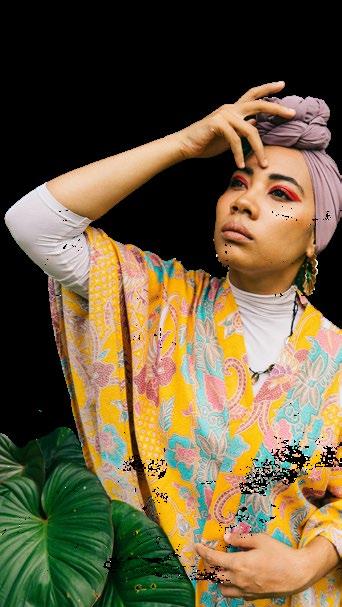
CROSSBOUNDARY QUARTERLY Q1 2024 39
Sports and advertising synergies to elevate creatives
“ln a country like South Sudan where unity is crucial for progress, basketball serves as a unifying force bringing people together irrespective of their differences,” former NBA star Luol Deng shared during a February conversation 33 at the Scenius Hub 34 , a youth space in Juba that supports entrepreneurship, creativity, innovation, and collaboration.
In July, South Sudan will have a chance to step onto the international stage in a positive light—this time at the Paris Olympics 35 . Last year, South Sudan’s men’s basketball team won their first FIBA World Cup game, earning themselves a qualifying spot for the Olympics. This accomplishment comes after Luol Deng assumed leadership of the program (primarily funding it himself) and less than a decade after its basketball federation was inaugurated.
Sports in Africa garner high levels of consumer interest, and with it, advertising campaigns. In turn, this creates new opportunities to feature creatives. If the South Sudan team’s performance on the court this summer grabs even a fraction of the attention of the recent African Cup of Nations 36 , the country will gain a considerable boost in visibility. According to reporting by Semafor 37 , this year’s AFCON included 17 commercial partners and is expected to earn approximately US$75 million in sponsorship revenue.
“When I was watching AFCON, I was most impressed by the quality of the adverts—for everything from mobile to tech to fast-moving consumer goods—done by Africans for Africans, or at least with Africa in mind. Sports broadcasts provide a great outlet with many eyeballs for advertisers to warrant investing in creatives and creating the attention or buzz they can plug into,” says Deng.
Celebrating African teams and athletes on international stages like the AFCON and the Olympics provides a spotlight under which the creative arts flourish—sports events are now soundtracks featuring Afrobeat musicians, canvases for fashion designers’ team kits, and narratives for filmmakers documenting inspiring journeys. This synergy between sports and the creative sector extends beyond the games, fueling a surge in economic activity and presenting a vibrant, trendsetting image of Africa to the world.
Beyond the Olympics, keeping an eye on South Sudan’s resilient creative output in the coming years is worthwhile. While significant barriers remain, the country undeniably offers untapped creative sector potential. Expanding funding opportunities beyond grantmaking requires diligent research and strategic relationships to understand the local ecosystem. Despite risks, investing in South Sudan’s creative economy would not just be about financial returns; it’s about participating in a broader movement that can play a pivotal role in diversifying Africa’s creative economy, driving growth, and better showcasing the continent’s talent globally.
40



CROSSBOUNDARY QUARTERLY Q1 2024
Links and references
Creative industry ecosystems in Colombia: how collaborative efforts foster economic and social prosperity
➊ Promoting the Diversity of Cultural Expressions and Creative Economy. UNESCO (2023)
➋ World Bank national accounts data in current US dollars. (2022)
➌ Usiacurí se embellecerá para atraer a los turistas. El Heraldo. (2021)
➍ Así logró Usiacurí pasar de 400 a 24.000 turistas al mes. El Tiempo (2022)
➎ Distritos Creativos. Bogotá’s Culture, Recreation and Sports Secretariat. (2024)
➏ Own calculations. Data from DANE, Bogotá’s GDP (supply side) accounts.
➐ Ideartes. (2023)
Conflict to creativity: South Sudan defying expectations and showcasing talents
➊ https://www.unfpa.org/data/world-population/SS
➋ https://www.adams.africa/insights/africas-creative-industries-millennium/
➌ https://www.ifpi.org/wp-content/uploads/2020/03/Global_Music_Report_2023_ State_of_the_Industry.pdf
➍ https://www.africanews.com/2024/02/27/universal-music-group-acquires-majorstake-in-nigeria-record-label-mavin-records/
➎ https://edition.cnn.com/2023/07/17/africa/africa-creative-industry-africa-walk-intl/ index.html
➏ https://models.com/rankings/ui/Top50/
➐ https://www.upi.com/Sports_News/2019/03/29/March-Madness-Oregon-DucksBol-Bol-to-enter-2019-NBA-Draft/5771553906149/
➑ https://andscape.com/features/promising-wnba-future-of-awak-kuier/
➒ https://www.unhcr.org/news/stories/its-us-says-nba-basketball-star-wenyengabriel-visit-south-sudan-homeland
10 https://jgrisham.com/sooley
11 https://www.youtube.com/watch?v=jlJfjqgI0HA
12 https://www.youtube.com/watch?v=uq7q3BMQNds
13 https://www.youtube.com/watch?v=KYkkAJM8t20
14 https://open.spotify.com/playlist/37i9dQZF1E4z2dKB056Fzk
15 https://www.youtube.com/channel/UCGu6Rgt2WbiixoOoZu8wjEw
16 https://twitter.com/OyayAbul
17 https://www.instagram.com/the_baobabhouse/
18 https://www.lemonde.fr/afrique/article/2023/08/19/a-juba-la-baobab-house-l-atelierbar-ou-l-on-peut-etre-qui-on-veut-au-soudan-du-sud_6185928_3212.html?utm_ source=ground.news&utm_medium=referral
19 https://www.theeastafrican.co.ke/tea/news/east-africa/in-s-sudan-art-speakslouder-than-words-heals-wounds-of-war-3641352
20 https://www.linkedin.com/in/deng-kon-bb8640194
Can transition incentives unlock Sub-Saharan Africa’s US$2.5B electric milling opportunity?
CrossBoundary’s Mini Grid Innovation Lab estimates 900M litres of diesel are required to process 90M tonnes of maize across the continent in diesel grain mills per year.
21 https://goodvibesmag.com/
22 https://www.luoldeng.org/
23 https://www.instagram.com/duckiethot/
24 https://www.washingtonpost.com/video-games/2019/10/14/once-he-was-refugeenow-hes-ceo-making-video-games-peace/
25 https://twitter.com/evalopa?lang=en
26 https://www.prosperafrica.gov/resource/investment-and-partnership-opportunitiesin-africas-creative-industries/
27 https://www.prosperafrica.gov/resource/investment-and-partnership-opportunitiesin-africas-creative-industries/
28 https://www.linkedin.com/in/yine-yenki-84758286/?originalSubdomain=ss
29 https://gogirlsict.org/
30 https://gogoplayssd.com/
31 https://www.linkedin.com/in/rachel-hakim-05312121b
32 https://www.prosperafrica.gov/resource/investment-and-partnership-opportunitiesin-africas-creative-industries/
33 https://twitter.com/goodvibesbiznet/status/1758557295925973452?ref_src=twsrc%5 Etfw%7Ctwcamp%5Eembeddedtimeline%7Ctwterm%5Escreen-name%3Agoodvib esbiznet%7Ctwcon%5Es1
34 https://sceniushub.com/
35 https://www.okayafrica.com/south-sudan-men-basketball-team-qualify-for-olympic/
36 https://theconversation.com/african-football-won-the-34th-afcon-with-cotedivoire-a-close-second-223451#:~:text=Caf%20boss%20Patrice%20Motsepe%20 estimates,countries%20all%20over%20the%20world.
37 https://www.semafor.com/article/02/11/2024/how-afcon-viewership-went-global

42
Click here to explore the Innovation Insight and learn more!
Our next CrossBoundary Quarterly will focus on blended finance
Blended finance is one of the core capabilities
CrossBoundary employs to mobilize capital in underserved markets. In our perspective all deals have externalities, and the majority of deals—even those considered “purely commercial”—use blended finance instruments. We look forward to sharing our perspectives on blended finance in the Q2 CrossBoundary Quarterly

Want to dive in now? In his in-depth piece, Every Deal is a Blended Finance Deal, CrossBoundary Group co-founder and Managing Partner Jake Cusack breaks down deal archetypes through a broadened blended finance lens and why we believe a blended finance framework creates opportunities for savvy and responsible investors.
“A

–
blended finance framework creates opportunities for savvy and responsible investors. Investors should always think about the positive and negative externalities of their investments, and how those externalities surface potential subsidies/taxes and catalytic/concessional structuring opportunities.”
Jake Cusack, co-founder and Managing Partner, CrossBoundary Group

Read Every Deal is a Blended Finance Deal here: https://www.linkedin.com/pulse/every-dealblended-finance-jake-cusack-sss9e/
CROSSBOUNDARY QUARTERLY Q1 2024
 Musician Blinky Bill performs at a CrossBoundaryhosted event in Nairobi, Kenya
Musician Blinky Bill performs at a CrossBoundaryhosted event in Nairobi, Kenya


























 aura García Aguirre and Gabriela Bojanini, in collaboration with Pedro Alejandro Cárdenas, creative director of Pigmento Crew
LG
GB
PAC
aura García Aguirre and Gabriela Bojanini, in collaboration with Pedro Alejandro Cárdenas, creative director of Pigmento Crew
LG
GB
PAC







































 Written by: Kymberly Bays, with inputs from Yine Yenki and Deng Kon YY
Written by: Kymberly Bays, with inputs from Yine Yenki and Deng Kon YY





























 Musician Blinky Bill performs at a CrossBoundaryhosted event in Nairobi, Kenya
Musician Blinky Bill performs at a CrossBoundaryhosted event in Nairobi, Kenya